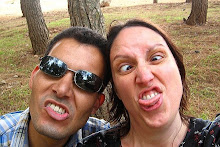Visit a Moroccan Hammam
Public baths are a part of daily Moroccan life. I provides the rundown on getting a thorough and enriching scrubdown. (Hint: Be sure to pick up a kiis in the souk on the way there.)
The situation: Your flip-flopped feet are thick with grime, your hair is full of dust and you’re looking for a respite from the vendor onslaught ("Come inside, just for looking!") on the streets . Escape the crowds and wash off the street funk Moroccan-style in the neighborhood hammam, or public baths. Along with the communal bakery, fountain, madrasa (school) and mosque, the hammam is one of five traditional elements found in every Moroccan neighborhood. For about two bucks you’ll get access to unlimited buckets of steaming water, a scrubdown that will leave your skin as soft as a newborn’s and a cultural experience you won’t soon forget.
How to spot the hammam: In the old medina, hammam signs are likely to be written in Arabic. If you can’t read that swirling script, look for these telltale hints: • People of your gender walking by with buckets full of shower supplies, rolled floor mats and towels – men and women are separated in the hammam, with different opening hours for each throughout the day (typically, daytime hours are reserved for women and evenings for men). • A smoky smell. It’s caused by the wood fires used to heat the water. • A communal bakery. The hammam often shares heating facilities with one, so if you see a bakery there’s a chance a hammam is near.
To bare or not to bare: Unlike in Japan’s communal bathhouses, the tradition in Morocco doesn’t usually involve getting nude, with the exception of small children. Both men and women tend to wear only their underwear. Leave the g-strings at home, girls; Morrocan women usually opt for more coverage in public. Foreign women who insist on wearing their bras while bathing, however, will look ridiculously self-conscious. Bring something to cover your wet hair when you leave. Moroccans are convinced that the quickest way to catch a cold is a bare, wet head (even in the heat of summer), and if you don’t cover yourself on the way out, someone will do it for you and with who knows what.
What to bring: Tote whatever you normally use in the shower – shampoo, conditioner, razor, soap – and visit the souk ahead of time to buy a small plastic bowl for dousing yourself with water inside the hammam. For a more authentic experience, hit the souk for traditional soap or ghasoul, too. Look for plastic baggies of sticky black goo made from olive oil byproducts, and ask for “black soap” – dried chips of herb-infused Moroccan clay that functions as shampoo and body soap when you add a splash of water to it.
If you plan to get scrubbed down by the hammam attendant (the highlight of any visit), be sure to bring a black scratchy glove called a kiis (say “keys"), which you can purchase anywhere in the souk for about a buck. If you’re a clean freak, bring a small plastic stool or mat to sit on to avoid placing your derriere directly on the hammam’s stone floor.
What to expect: When you go the authentic route and visit a real hammam in the medina as opposed to a fancy hotel’s upscale version, don’t expect anything luxurious – rose petals on the floor and silk-swathed lounges are not part of the real deal। There’s a small changing area near the entry where you can hang your towel and clothes। And the baths consist of several rooms centered on large cisterns with gushing water. The farther you venture into the hammam (and the closer you get to the wood fire), the hotter the water in the fountains gets. Everyone sits on the floor, against the walls, to bathe. Buckets are provided, but usually it’s up to you to trod back and forth to the hot and cold fountains, filling the buckets with water and mixing them for the perfect temperature back in your area. The hammam ceiling is usually domed and pierced with small holes to allow natural light to stream in—a beautiful and figure-flattering effect. It’s not always as tranquil as it sounds, however, as mothers attempt to lather up their screaming children while gossiping at high decibels (the hammam is considered a prime spot for scoping potential daughters-in-law). The head-to-toe scrub-down experience is another thing to be prepared for – this is one seriously abrasive massage. You lay down on the stone floor and the attendant’s goal is to rub your skin until several layers peel off like strands of dirty spaghetti. You’ll be amazed, if slightly grossed out, by the filth that falls off your body, and you’ll literally leave in new skin.
What to avoid: The hammam floors are slightly sloped for drainage, so spend a few seconds when you first arrive watching the water flow to make sure you don’t seat yourself downstream in a current of dead skin offal. Don’t take more than two buckets for water as other bathers consider this greedy. And if you decide to douse yourself with cold water at the end of your visit, be sensitive of the people around you – a fierce verbal lashing is pretty much guaranteed if you give a fellow bather an unexpected icy splash.
How to sound like a local, even if you don’t look like one: When leaving the hammam, you’ll likely hear people on the street call to you “BisaHA,” which, roughly translated, means “to your health.” It will please them immensely if you return the wish with the traditional Arabic response, “Allah ya’tik saHA!” – may God also bless yours.
Sunday, December 23, 2007
Subscribe to:
Post Comments (Atom)


No comments:
Post a Comment